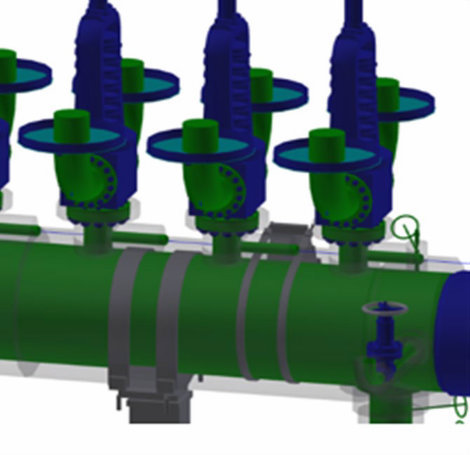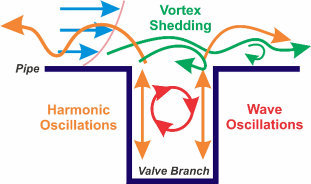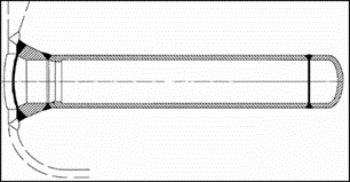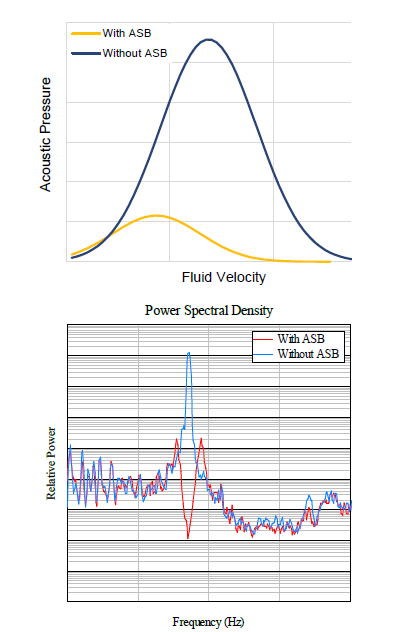
To resolve flow induced acoustic resonance in piping systems, Westinghouse can perform plant specific subscale testing to determine the source of the resonance and the optimal design change required to prevent it.
For many plants, this design change involves the implementation of an acoustic side branch (ASB) in the existing piping system. Westinghouse has experience in testing and designing ASBs for several plants with flow induced acoustic resonances. The implementation of ASBs has proven to be an effective solution in reducing the magnitude of mechanical stress in the system and audible tones produced as a result of the resonance.
Flow induced acoustic resonances are often caused by coupling between vortex shedding and an intrinsic acoustic wave in the system. This resonance can cause oscillatory mechanical stress in the piping system or produce continuous audible tones at specific frequencies.
Through subscale testing, Westinghouse can determine the source of the resonance in the system and develop design changes to prevent its occurrence. Once the source is identified, Westinghouse designs an ASB that will decouple the resonating frequencies and shift the point of resonance away from anticipated operating conditions.

A typical ASB is a small, straight section of piping welded directly to the source of the resonance in the piping system. To implement the ASB, a hole is cut in the piping system and the branch is welded over the hole in the piping to create a small volume addition in the system. This additional volume alters the frequency of the intrinsic acoustic wave in the piping which in turn decouples it from the vortex shedding frequency at the fluid velocity of interest and prevents the resonance from occurring.
Prior to installation, the ASB is also filled with sintered screen material to provide further damping of acoustic energy in the system. The screen material still allows fluid to flow into and out of the ASB, however any acoustic waves that enter the branch are partially absorbed by the screens to prevent additional resonance.

Westinghouse technology is fundamental to nearly 50% of the world's nuclear reactors. Now, that same trusted expertise is delivering the services and parts to meet the needs of 100% of the nuclear plants across the globe.

The two figures on the right show the implementation of an ASB can have a profound impact on the acoustic behavior of a piping system. The first figure shows that for a piping system with flow induced resonance, the ASB dramatically reduces the acoustic pressures experienced in the system and shifts the point of resonance to lower fluid velocities. The second figure shows a power spectral density (PSD) for the same piping system, depicting which frequency components of the pressure wave are the most energetic at a given fluid velocity. This figure shows that without an ASB, the system has a large peak in the PSD at a specific resonant frequency. However, when the ASB is implemented, the previous resonant frequency no longer appears and the PSD does not show any significant resonance at that fluid velocity.
Designing and implementing an ASB for a piping system with flow induced resonance can reduce or eliminate the observed resonance by modifying the intrinsic acoustic frequency in the system. Preventing the observed resonance can reduce the potential for fatigue failure of components in the system and magnitude of any audible tones produced by the resonance.
Westinghouse can perform subscale testing to determine the source of the acoustic resonance in many different piping systems and develop an ASB design based on that source to prevent further activity.